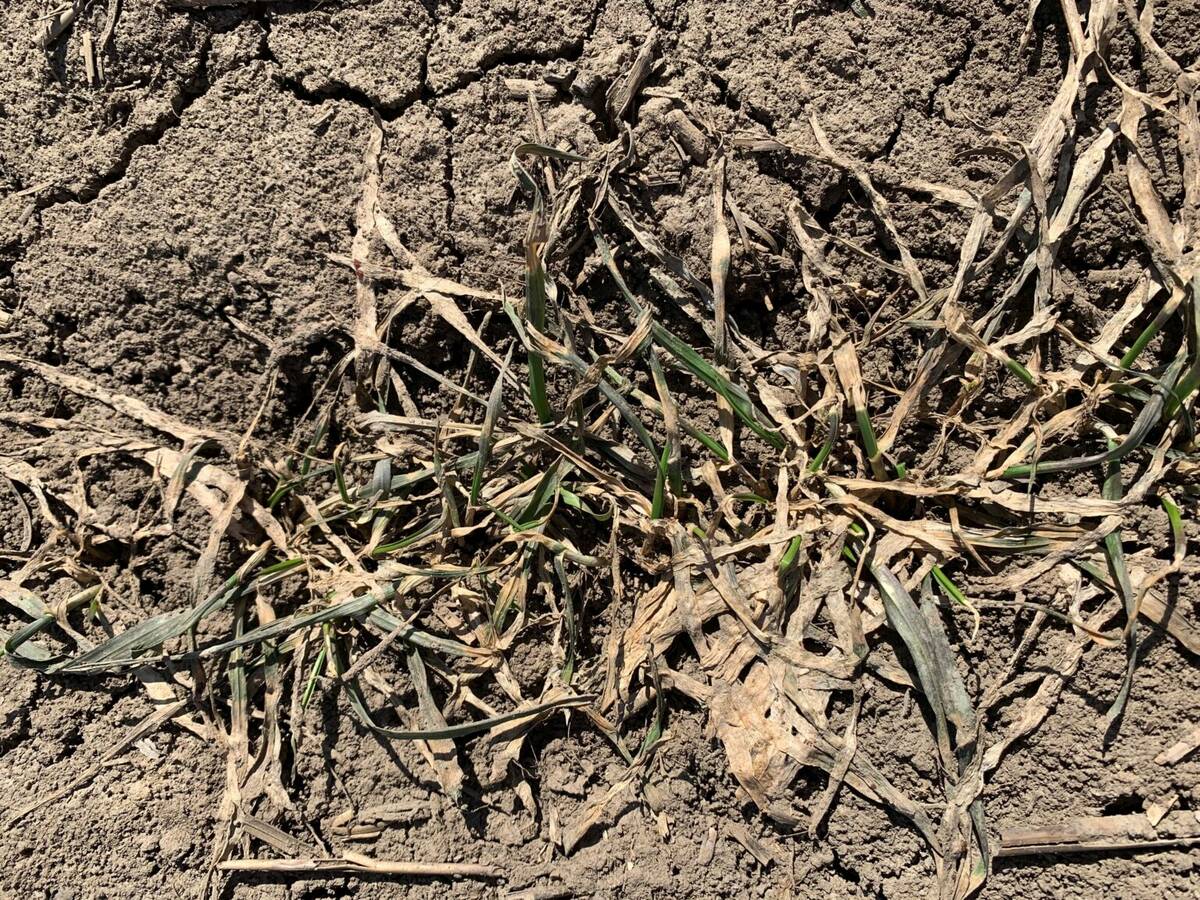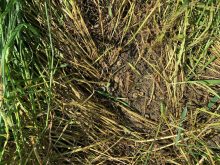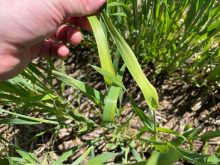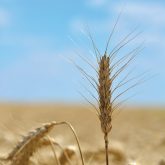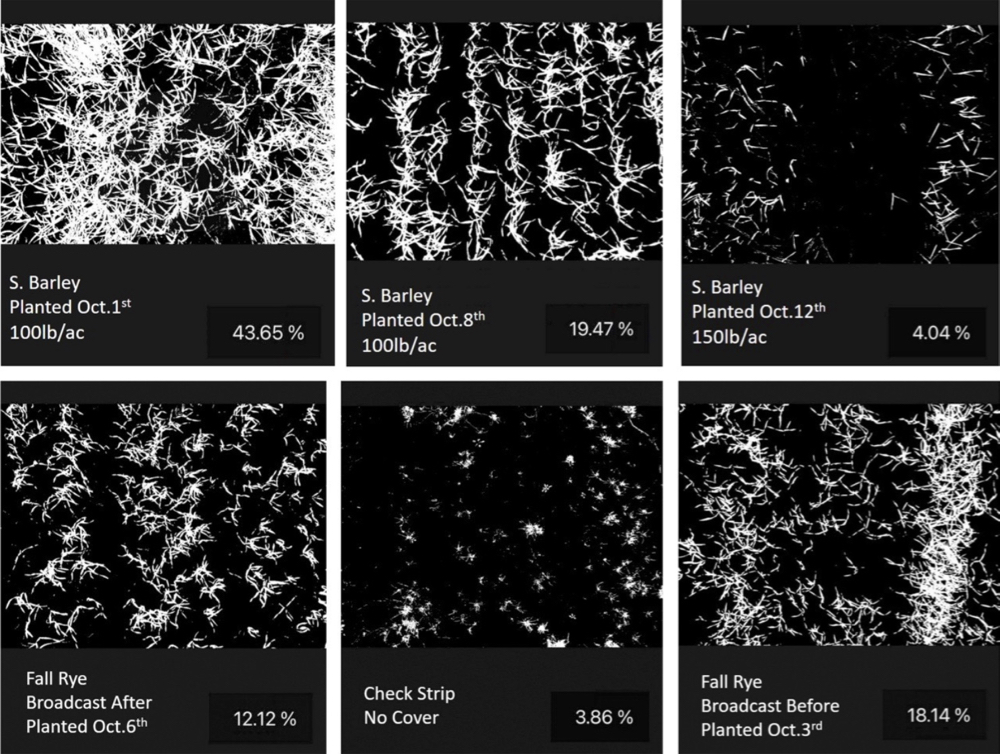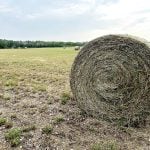Many areas of the province received snowfall amounts far exceeding that in previous years, and this has experts sounding the alarm about the potential for snow mould.
The fungal disease can damage or kill crops after prolonged snow cover. The fungus Typhula incarnata occurs when snow cover exceeds 40 to 60 days, while Microdochium nivaile does not require snow to form; instead, it develops because of the freezing and thawing of snow, which creates ice buildup and excessive moisture.
Why it matters: Snow mould can damage winter cereals and there are limited in-season options to manage it.
Read Also
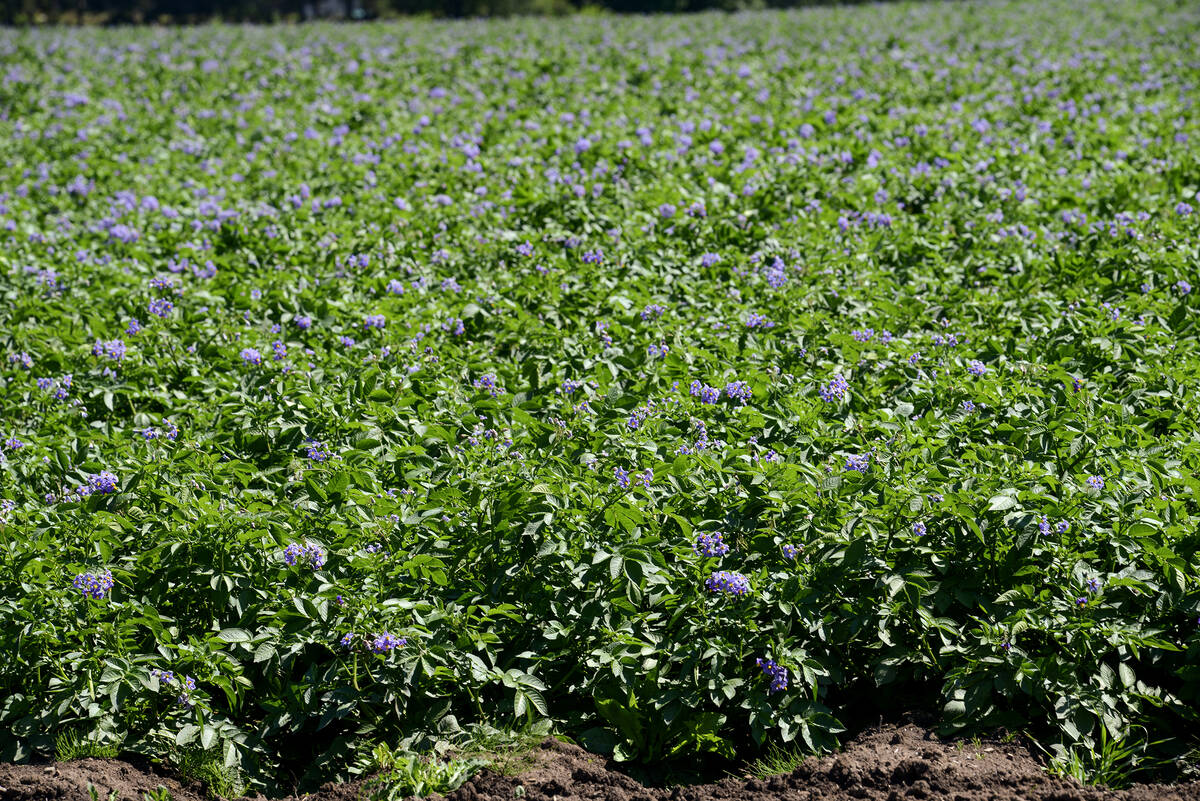
Ontario potato yields down slightly, but quality is high
Ontario’s potato harvest is on the home stretch despite drought and hot summer temperatures stretching into October.
Joanna Follings, cereals specialist with the Ontario Ministry of Agriculture, Food and Agribusiness, said snow mould in Ontario is most likely found in areas with significant snow cover on the ground that doesn’t freeze or freeze deeply enough prior to snowfall.
“This occurred in many areas of the province, so we are seeing more fields with snow mould this spring. The snow provides insulation for the pathogen to survive in soil and on residue and allows them to grow on wheat or other winter cereal crops throughout the winter,” she said, noting that winter triticale, rye, and barley have been affected this year along with wheat.
Areas that saw particularly high levels of snowfall accumulation are showing the greatest signs of snow mould. She said that Bruce, Grey, Huron, Perth, and Wellington counties have been hit particularly hard, but it is being found in fields across the province.
In Essex County, however, there have been limited signs of snow mould. Marty Vermey, senior agronomist with Grain Farmers of Ontario, said a lack of snow cover has kept snow mould at bay.
“Down here in the southwest (Essex/Kent), we did not have much snow cover and had good frost in the ground, not like the rest of the province,” he said. “Any snow we had received rain in a very short time afterwards and turned to ice.”
He added that most damage to fields is in flooded/ponded areas in fields. This has led to small dead spots due to water being held for too long.
Across other parts of Ontario, the race is underway to reduce the impact of snow mould.
“Those winter cereal crops that were planted early and had lots of top growth last fall prior to significant snowfall are particularly bad. It is impacting all winter cereals, including wheat, barley, rye, and triticale; however, winter triticale and rye have been impacted heavily in some fields, with some rye fields being completely taken out by snow mould. Differences between wheat varieties are also showing up across fields,” said Follings.
Limited options
She added that there are limited resources available to farmers to mitigate the effects of snow mould. If damage does not occur at the growing point, then most plants will continue to develop. In severe cases, the growing point may be damaged, and the plants will die.
“Unfortunately, there are limited in-season options for managing snow mould. Early nitrogen applications will not help plants overcome the disease,” she said.
“Planting snow mould-resistant or tolerant varieties is the first line of defence along with planting within your optimum planting range to avoid too much top growth in the fall.”
She said seed treatments and foliar fungicides have shown inconsistent efficacy but can provide suppression, and crop rotation is generally not helpful given the fungus’ ability to survive in the soil for long periods of time. Follings noted that it is important to remain patient to give the crop some time to grow to determine the full impact of snow mould in a field.
“The decision to keep or remove a stand should be made as late as possible,” she said.


